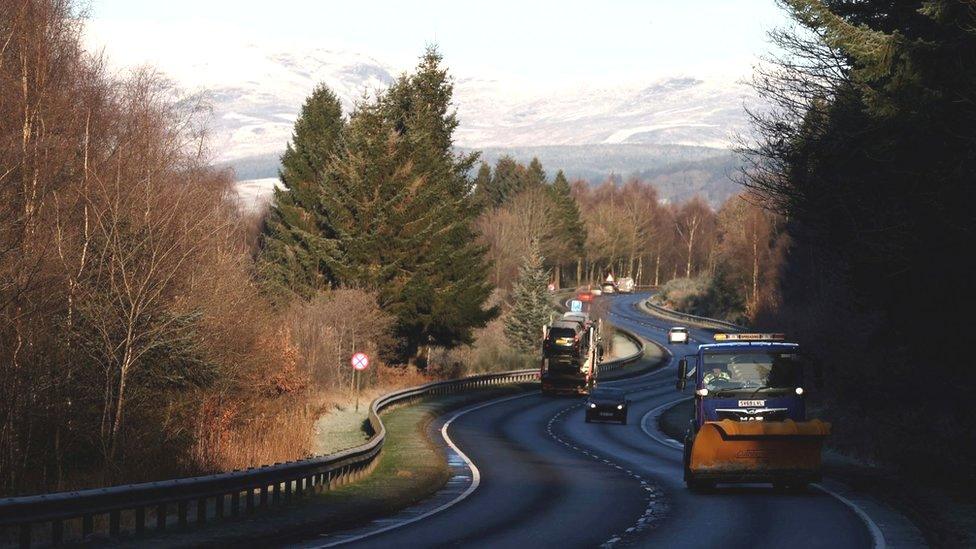Fatigue behind almost quarter of serious A9 crashes
- Published

Fatigue is to blame for about a quarter of all fatal and serious crashes on the A9 between Perth and Inverness, according to a new safety drive.
The Scottish government and Road Safety Scotland have launched a campaign highlighting the risks of tiredness, external.
There has been particular focus on the stretch of A9 where crash deaths reached a 20-year high last year.
The campaign also comes after the government said a major A9 dualling project would not be completed by 2025.
About 77 miles of road between Inverness and Perth remains to be upgraded.
Transport Minister Jenny Gilruth said last Wednesday the target was "unachievable" because of delays and other challenges caused by the Covid pandemic, Brexit and the war in Ukraine.
'Serious issue'
Launching the fatigue awareness campaign, Road Safety Scotland director Michael McDonnell urged drivers to be alert to the risks.
He said: "Sadly we have seen a rise in serious and fatal collisions on the A9 trunk road in the last year and many of them involve an element of driver fatigue - something that can be prevented.
"A tired driver is a danger not only to themselves, but to everyone on the road."
Mr McDonnell added: "If you feel tired while behind the wheel, opening your window or turning up the music isn't enough. Stop for a rest and a coffee before you get back on the road to help keep you and others safe."
Ms Gilruth said: "Driver fatigue is a serious issue that causes too many serious and fatal road collisions each year.
"We're reminding people to plan their journeys well in advance, ensure they are well-rested before setting out and take regular breaks. It's simple yet powerful advice which can help save lives on Scotland's roads."
Sleep-related collisions are about 50% more likely to result in death or serious injury as they tend to be high-speed impacts.
- Published9 August 2023

- Published8 February 2023

- Published6 December 2022
